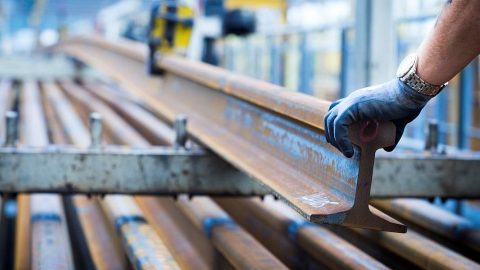
How rails are handled to installation points
Rails are an essential part of the rail industry. Delivering them from the manufacture sites to installation points require a lot of skills and great attention to detail.
A fantastic amount of attention is taken during rail manufacture to ensure rails are fit for a life of service. The popular modes of transport for carrying rails are lorries and trains. Where transport by water is needed, rails are dispatched globally via a variety of ships and barges in both short and long lengths. However, getting them to where they are needed should not be forgotten as there are many challenges getting such a long product to its final destination.
Delivery essentials
To deliver rail there are three essential things:
- Safety – Transport must be safe for those transporting it and for those near the rail when it is being shipped
- Integrity – There is no point in a product getting to its destination if it cannot be used once it arrives. Rails must get to their destination in good condition without damage
- Efficiency – Transport needs to be economical to allow businesses to be sustainable.
One of the factors which arises in each category is the first and perhaps most obvious challenge; the actual length of a rail. With the shortest common length a little over 9 metres, and the longest over 200 metres, transport of such long objects poses some challenges. Road transport of up to 36-metre lengths is possible where locations allow but in the UK the most common “short” length for road transport is 18.288 metres.
The length may seem strange to those who grew up in metric, but that length is actually 60 feet and as the rail industry largely grew up in imperial measurements, they persist to this day with many rails sold in metric equivalents. Rail longer than 36 metres must be transported by rail, and we regularly dispatch up to 216-metre rails from the UK via specialist rail delivery trains for direct delivery to the installation location.
Text continues below the picture.
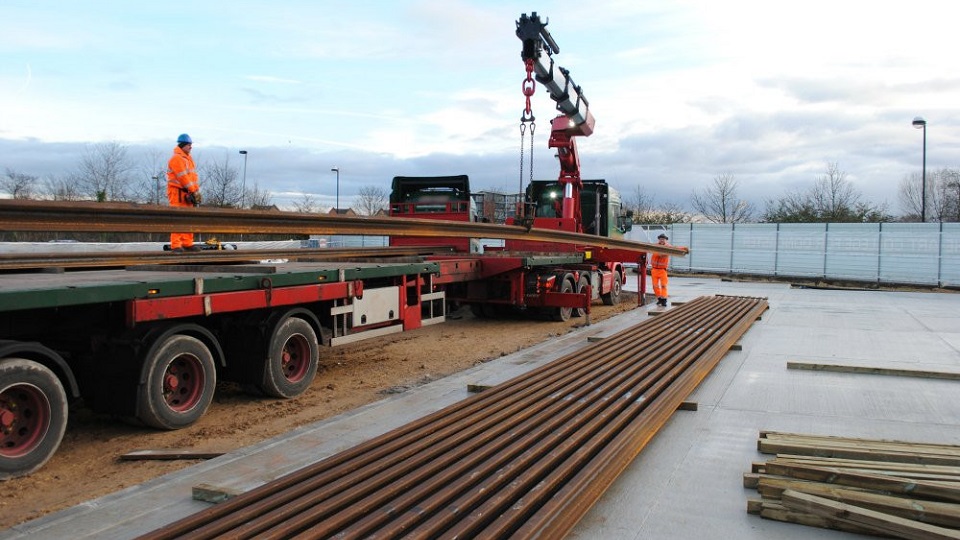
Bad handling of rails, source: British Steel.
Poor handling of rails
Most mistakes in rail handling result in safety hazards. The workers often offload the rails standing on trailers with no edge/fall protection and guiding bundles of rails by hand. The popular method for handling rails is the use of chains. Lifting rail in bundles is poor from a product quality point of view too as product damage can occur.
Cold marking of rails from contact with chains (or other rails), can lead to serious product quality issues. Whilst bundle lifting may be appropriate for handling scrap rails, for new rails, cold marking of them should be avoided at all costs, and there is more detail why later in this article.
The photo below was posted up as an example of good work. I beg to differ from a rail quality point of view. Yes, scrap panels can be lifted out with chains, but new ones shouldn’t. The worst place to damage a rail is under the rail foot as it cannot be seen/monitored or rectified.
Here is another image of some poor handling/offloading. This time they are using the right lifting clamps to lift the rail – but they shouldn’t be lifting just in the middle from both a safety and a rail quality point of view. The lifting points should be further apart to minimise the lifting stresses on the rail and the droop of the ends (there is even an unused spreader beam visible on the lorry!). I also suspect that the crane driver doesn’t have any fall protection behind him but I cannot be sure.
Aside from the steel wire choke grip potentially causing cold marking of the rail, it probably is not the safest way of pulling the rail. Not that you should be dragging a rail along the track bed of course! The potential for damage to the rail foot should be apparent I hope. As I’ve already mentioned the worst place you can put cold damage into the rail is the rail foot, as this sees the greatest tensile forces in service.
Text continues below the picture.
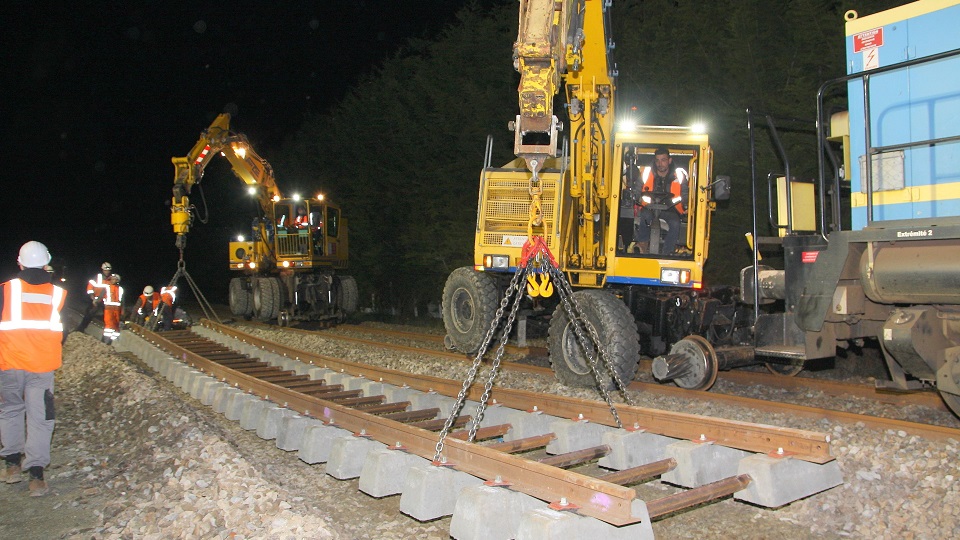
Chains used to lift new panels, source: British Steel.
Reasons to avoid cold damage
- First is the fact that any damage to the rail is not good. Very tight surface quality limits exist for new rail e.g. 0.35 millimetre in some areas for European rail supply specification which is around the same thickness as a fingernail. Damage concentrates stress, so potentially weakens the rail in service. Cold damage tends to be sharper and more angular in shape and so intensifies stress more than damage when the rail is still red-hot during manufacture. Increased stresses around dents and scratches can start fatigue cracks growing under the right (wrong?) conditions, ultimately leading to rail failure.
- The second is a bit more complicated to understand if you aren’t a metallurgist. But essentially it boils down to this: When the surface is damaged, extremely localised heating happens in the damaged area. This flash heating can be likened to a friction burn if you slide your hand too quickly down a rope. The surface of the steel in damaged areas is rapidly heated and cooled. This flash heating and quenching can transform the structure of the surface layer of the steel. This transformation of structure is important as what it transforms into, called martensite, is far more brittle than normal rail steel. So not only is surface damage bad at concentrating stress, it can also make the surface layer of material less tolerant to damage. This double impact is why so much care is taken to avoid cold damage of rails.
The article was republished and edited with the author’s permission.


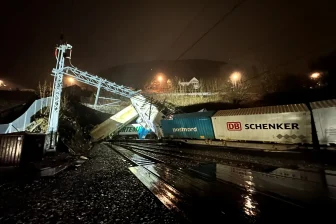
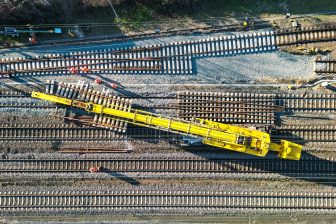
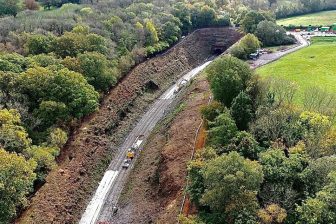
Just to note that the e-mail author link above should be to @britishsteel.co.uk rather than @railtech.com